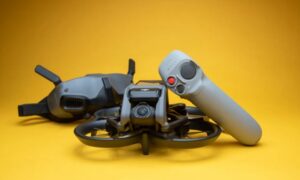Log files contain the answers to most IT problems. The challenge is knowing where to look and what to look for. This guide covers proven methods for analyzing logs efficiently.
Why Most Log Analysis Fails
Teams typically collect logs but struggle to analyze them effectively. When issues occur, they search for “error” and get overwhelmed by results. Without knowing normal system behavior, every error looks critical. They focus on recent entries while the root cause happened hours earlier. They check application logs but ignore database or network logs that might contain the real problem.
This reactive approach wastes time and misses patterns. Effective log analysis requires understanding normal behavior, knowing which events matter, and correlating information across different systems.
Essential Log Analysis Techniques
Error Pattern Recognition
Frequency analysis reveals recurring issues. One error might be random; fifty identical errors indicate a systemic problem.
Time correlation shows cascading failures. Database connection errors followed by application timeouts suggest resource exhaustion.
User impact assessment prioritizes fixes. Errors affecting many users matter more than single-user edge cases.
Performance Baseline Establishment
Track normal metrics to spot abnormal behavior:
– Average response times by endpoint
– Typical error rates per hour
– Standard resource utilization patterns
– Regular traffic volumes
Document these baselines. Without knowing what is normal, you can’t identify what is abnormal.
Security Event Detection
Security incidents rarely announce themselves clearly. Multiple failed login attempts often precede a successful compromise. Users accessing files they normally don’t touch may indicate account takeover. Logins outside normal business hours or from unusual locations warrant investigation. Sudden privilege changes or administrative access by regular users need attention.
Log analysis helps identify these patterns before they become major incidents. The key is establishing baselines for normal user behavior and system access patterns.
Practical Analysis Workflow
- Define Your Question
Start with specific questions:
– Why is the checkout process failing?
– Which users are experiencing slow page loads?
– What caused the database to crash at 3 AM?
Vague questions like “check the logs” waste time.
- Identify Relevant Log Sources
Map your question to specific log files:
– Application errors → application logs
– Slow database queries → database logs
– Network issues → firewall/router logs
– User behavior → access logs
- Filter Before Analyzing
Narrow your search scope:
– Time range (last hour, yesterday, specific incident window)
– Severity level (errors and warnings, not info messages)
– Specific components or users
– Relevant HTTP status codes or error types
- Look for Patterns
Count occurrences:
# Count error types
grep “ERROR” app.log | cut -d’ ‘ -f4 | sort | uniq -c | sort -nr
# Find peak error times
grep “ERROR” app.log | cut -d’ ‘ -f1-2 | sort | uniq -c
- Correlate Across Systems
Match timestamps between different log files. A web server error at 14:32:15 might correlate with a database connection timeout at 14:32:14.
Choosing Log Analysis Tools
Command Line Tools
Perfect for quick investigations and server troubleshooting. Every Unix system has grep, awk, and sed built-in. You can search millions of log entries in seconds, create automated scripts, and run analysis without installing anything. The downside? You’re manually correlating events across different files, creating visualizations in your head, and writing complex one-liners for anything beyond basic searches.
Centralized Platforms
When you’re managing dozens of servers and applications, command-line tools become unwieldy. Centralized platforms ingest logs from multiple sources in real-time, let you write complex queries across all your data, create dashboards for ongoing monitoring, and configure alerts for critical events. They handle data retention automatically and scale with your infrastructure.
The trade-off is complexity and cost. You need to configure log forwarding, learn query languages, and maintain another system. For organizations with complex environments, specialized log analysis tools become essential for connecting the dots across distributed systems.
Common Analysis Scenarios
Application Performance Issues
Performance problems often cascade across systems. An endpoint that normally responds quickly starts timing out. Database logs might show queries taking longer than usual. System metrics could indicate memory or CPU pressure. By correlating these events, you can trace the problem from user symptoms back to root causes.
Security Incident Investigation
When investigating security concerns, timeline reconstruction is crucial. Authentication logs show login patterns. File access logs reveal what resources were touched. Network logs indicate external connections. Combining these sources helps determine the scope and impact of potential breaches.
System Outage Analysis
Outages rarely happen instantly. Systems typically show warning signs before complete failure. Error rates might increase gradually. Resource utilization could trend upward. Connection pools might become exhausted. Log analysis helps identify these leading indicators and understand failure sequences.
Automated Monitoring Setup
Critical Alerts
Configure immediate notifications for:
– Application crash or restart
– Database connection failures
– Authentication system issues
– Critical service unavailability
Trend Monitoring
Track gradual changes in:
– Error rate increases
– Response time degradation
– Resource utilization growth
– Security event frequency
Threshold Configuration
Set realistic thresholds based on historical data:
– Error rate: 5x normal baseline
– Response time: 3x average response time
– Failed logins: 10 attempts per user per hour
– Disk usage: 85% capacity
Log Analysis Best Practices
Organizations need sound computer security log management practices for developing, implementing, and maintaining effective log management throughout an enterprise, as outlined in NIST guidelines. This includes structuring your logs properly and implementing consistent practices across systems.
Structure Your Logs
Use consistent formats across applications:
{
“timestamp”: “2024-01-15T10:30:00Z”,
“level”: “ERROR”,
“service”: “checkout”,
“user_id”: “12345”,
“message”: “Payment processing failed”,
“error_code”: “PAY_001”
}
Implement Log Levels Correctly
– ERROR: Something broke, needs immediate attention
– WARN: Something unexpected, might cause problems
– INFO: Normal operation events
– DEBUG: Detailed troubleshooting information
Regular Maintenance
– Archive old logs based on compliance requirements
– Review and update alert thresholds monthly
– Clean up irrelevant log sources
– Test log analysis procedures quarterly
Measuring Analysis Effectiveness
Track these metrics to improve your log analysis:
Time to Detection: How quickly you identify issues after they occur
Time to Resolution: How long it takes to fix problems once detected
False Positive Rate: Percentage of alerts that aren’t actual problems
Coverage: Percentage of critical systems generating useful logs
Advanced Techniques
Statistical Analysis
Use basic statistics to identify outliers:
– Calculate average response times
– Identify requests beyond 95th percentile
– Detect unusual traffic patterns
Pattern Recognition
Look for recurring sequences:
– User workflows leading to errors
– System events preceding crashes
– Security attack patterns
Predictive Indicators
Monitor leading indicators of problems:
– Memory usage trending upward
– Error rate is gradually increasing
– Database query performance degrading
Conclusion
Effective log analysis combines the right tools with systematic approaches. Start with clear questions, focus on high-impact events, and establish baselines for normal behavior.
The goal isn’t to analyze every log entry, but to quickly find actionable information that helps resolve problems and prevent future issues. With proper techniques and tools, log analysis becomes a powerful troubleshooting and monitoring capability that improves system reliability and security.
Read More From Techbullion



































